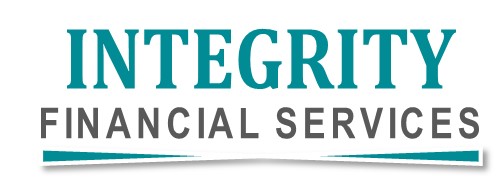Introduction
In an era where healthcare expenses often eclipse other financial concerns, managing the cost of essential medications like Gabapentin becomes crucial. This article explores how to purchase Gabapentin in various dosages affordably, with insights into insurance coverage and generic options, offering a lifeline amidst soaring medical costs.
Gabapentin and Its Importance
Gabapentin, known for its effectiveness in treating neuropathic pain and seizures, is a medication whose accessibility is vital for many. However, the cost associated with its various dosages can be a significant barrier for those requiring continuous treatment.
The Impact of Inflation on Healthcare Costs
Recent spikes in inflation have exacerbated the challenge, making even basic healthcare services, including the purchase of medications like Gabapentin, increasingly unaffordable for the average American. This situation underscores the urgency of finding cost-effective solutions for essential medical needs.
Insurance Coverage for Gabapentin: A Mixed Blessing
While insurance, including Medicare, often covers Gabapentin, the extent of this coverage can vary. Patients may still face high out-of-pocket costs due to co-pays or deductibles, making it essential to understand one’s insurance plan thoroughly.
The Dilemma of High Deductibles and Co-pays
For many, high deductibles and co-pays mean that even with insurance, the cost of Gabapentin can remain a significant financial burden, prompting the need for more affordable alternatives.
In today’s healthcare landscape, the financial structures of insurance plans present a considerable challenge to many Americans, especially when it comes to managing high deductibles and co-pays. These out-of-pocket expenses can often become a significant barrier to accessing necessary medical treatments and medications, such as Gabapentin, which is essential for individuals dealing with neuropathic pain or seizures.High deductibles, the amount that patients must pay before their insurance starts to cover medical costs, have been steadily increasing. This means that for many, a substantial amount of medical expenses must be paid out of pocket at the beginning of each policy year before any benefits from their insurance plan kick in. For individuals and families already managing tight budgets, this requirement can delay or even prevent the timely receipt of medical care and necessary prescriptions.
Co-pays, the fixed amount paid for healthcare services and prescriptions at the time of service, further add to the financial burden. While co-pays can make costs more predictable, they can still accumulate, particularly for those requiring regular medical appointments, ongoing treatments, or multiple medications. For someone on a medication like Gabapentin, which may be needed daily, these co-pays can represent a significant ongoing expense.
In response to these challenges, many are turning to alternative solutions, such as generic medications, which can be significantly less expensive than their brand-name counterparts. Online pharmacies and patient assistance programs also offer avenues to mitigate these costs, providing lower-priced options for essential medications like Gabapentin. Yet, while these alternatives offer some relief, they do not address the underlying issue of high deductibles and co-pays embedded within many healthcare plans.
Generic Gabapentin: A Cost-Effective Alternative
Generic versions of Gabapentin present a viable solution to this dilemma. They offer the same therapeutic benefits at a fraction of the cost of the brand-name medication, Neurontin.
Exploring Generic Gabapentin Prices
The affordability of generic Gabapentin is a game-changer for many, with prices significantly lower than their brand-name counterparts. Here are some examples:
- Gabapentin 100mg, 90 tablets: $69.95
- Gabapentin 300mg, 90 tablets: $90.00
- Gabapentin 400mg, 90 tablets: $110.00
- Gabapentin 600mg, 90 tablets: $209.95
- Gabapentin 800mg, 90 tablets: $269.95
The Role of Online Pharmacies in Reducing Costs
Online pharmacies have emerged as a key player in making generic Gabapentin more accessible. They often offer competitive prices, further lowering the cost for patients without insurance or those with high deductible plans.
Navigating Online Purchases Safely
While online pharmacies can offer significant savings, it’s crucial to ensure they are reputable and that the medications they provide are safe and effective. Seeking pharmacies with proper certifications is essential.
The Broader Implication of Affordable Gabapentin
Access to affordable Gabapentin not only alleviates financial stress for individuals but also has broader implications for public health, enabling more people to manage their conditions effectively.
Conclusion: A Call to Action for Affordable Healthcare
The journey toward more affordable healthcare requires awareness and action. By opting for generic Gabapentin and utilizing cost-saving strategies, individuals can navigate the financial challenges posed by the current healthcare landscape.
FAQ Section: Addressing Common Concerns
1. Does insurance cover gabapentin?
Yes, generic Gabapentin is typically covered by the majority of Medicare and insurance plans. However, it’s worth noting that sometimes, pharmacy coupons or the listed cash prices can be even lower than your insurance copay. For those looking to maximize savings, comparing prices across different anti-epileptic medications is advisable. Despite this coverage, opting for the generic version of Gabapentin remains an excellent alternative for significantly reducing expenses. Generic drugs offer the same efficacy and safety profile at a fraction of the cost, making them a financially wise choice for managing health costs effectively.
2. How much does Neurontin cost without insurance?
The price for Neurontin, specifically the 100 mg oral capsule, typically hovers around $314 for a batch of 100 capsules if you’re paying out of pocket, with the exact cost varying by pharmacy. This estimate doesn’t take insurance into account and is based on the assumption that the customer is using a discount card from Drugs.com, which is widely accepted at numerous pharmacies across the U.S. For those seeking a more budget-friendly option, the generic version of Neurontin, still at a 100mg dosage, is considerably cheaper, costing about $60 for 100 capsules. Opting for this generic option can provide substantial savings, making it an attractive choice for those without insurance coverage.
3. How much is a 30-day supply of Gabapentin?
For a 30-day supply of Gabapentin (Neurontin) at the 100mg dosage, the cost typically ranges between $45 to $50, depending on the retail pharmacy prices. This price range is based on individual unit costs of $1.5 to $1.67. It’s noteworthy that purchasing larger quantities can reduce the price per unit significantly. For example, a 60-day supply may range from $54 to $60, and a 90-day supply could cost between $68 to $73, demonstrating the potential for savings with bulk purchases. For those needing a longer-term supply, a 180-day quantity could be available for $108 to $115, further lowering the per unit cost to $0.6 to $0.65. This pricing structure highlights the benefit of buying in larger quantities for those who need ongoing medication management.
4. Is Neurontin an OTC or RX?
Neurontin, prescribed for treating neuropathic pain related to herpes virus or shingles and seizures in adults and children aged three and older, is a prescription medication (RX). This means it necessitates a doctor’s approval for purchase and use. However, it’s important to note that there are over-the-counter (OTC) alternatives, such as GABIN, which is considered an affordable analog to Neurontin. While these alternatives may be available without a prescription, consulting a healthcare provider before starting any new medication is always advisable to ensure it’s appropriate for your health condition.
5. Is there an over the counter version of gabapentin?
Gabapentin, an anticonvulsant medication, is traditionally available only through a doctor’s prescription. This ensures that its use is monitored by healthcare professionals, especially given its specific indications and potential side effects. However, for those seeking over-the-counter options, products like Gabin are available in a range of dosages from 100mg to 800mg. While Gabin may offer an alternative for individuals looking for non-prescription solutions, it’s essential to consult with a healthcare provider before starting any new medication, even if it’s available over the counter, to ensure it’s suitable for your health needs.
6. How much gabapentin per pill?
Gabapentin comes in various forms and strengths to accommodate different treatment needs. For capsules, the dosage can be 100mg, 300mg, or 400mg of gabapentin per capsule. Tablets are available in higher doses, containing either 600mg or 800mg of gabapentin each. If gabapentin is prescribed in liquid form, 2ml is typically equivalent to a 100mg tablet or capsule. It’s crucial to carefully read the label for the exact dosage information. Given the substantial cost of gabapentin without insurance, a practical and cost-effective alternative is to consider purchasing generic versions online. These generics offer the same effectiveness at a significantly reduced price, making them an appealing option for those needing to manage expenses while on medication.
7. Is over-the-counter GABA the same as gabapentin?
No, over-the-counter (OTC) GABA and gabapentin are not the same. GABA (gamma-aminobutyric acid) is a neurotransmitter naturally present in the brain, playing a critical role in reducing neuronal excitability throughout the nervous system. Gabapentin, on the other hand, is a pharmaceutical drug designed to mimic the effects of GABA. Despite being an analogue of GABA, gabapentin doesn’t directly interact with the same brain receptors as GABA does. Instead, it works through a different mechanism to achieve its therapeutic effects, particularly in controlling seizures and relieving nerve pain. Therefore, while they are related in terms of their chemical inspiration, their functions and applications in medical treatment are distinct.
8. Does Medicare Cover Gabapentin?
Yes, if you need gabapentin to treat peripheral neuropathy or another related nerve condition, you’ll be pleased to know that almost all Medicare benefits plans include coverage for this medication under Part D, the prescription drug segment of Medicare. Gabapentin, being a medication that’s both necessary for the treatment of serious conditions and available at retail pharmacies, generally qualifies for coverage. However, the extent of this coverage might vary in specific situations, such as if gabapentin is administered as part of treatment in a skilled nursing facility or a hospital, where it’s typically covered by Medicare Part A. For outpatient treatments covered under Part B, gabapentin would only be involved in a claim if it’s administered during a doctor’s visit to monitor dosage tolerance.
In the modern world, not everyone can afford comprehensive insurance coverage, which is why considering generic versions of gabapentin, such as GABIN, offers a viable, cost-effective alternative. These generic options are significantly less expensive and remain accessible even to those without insurance, ensuring that more individuals can manage their health needs without undue financial burden.




